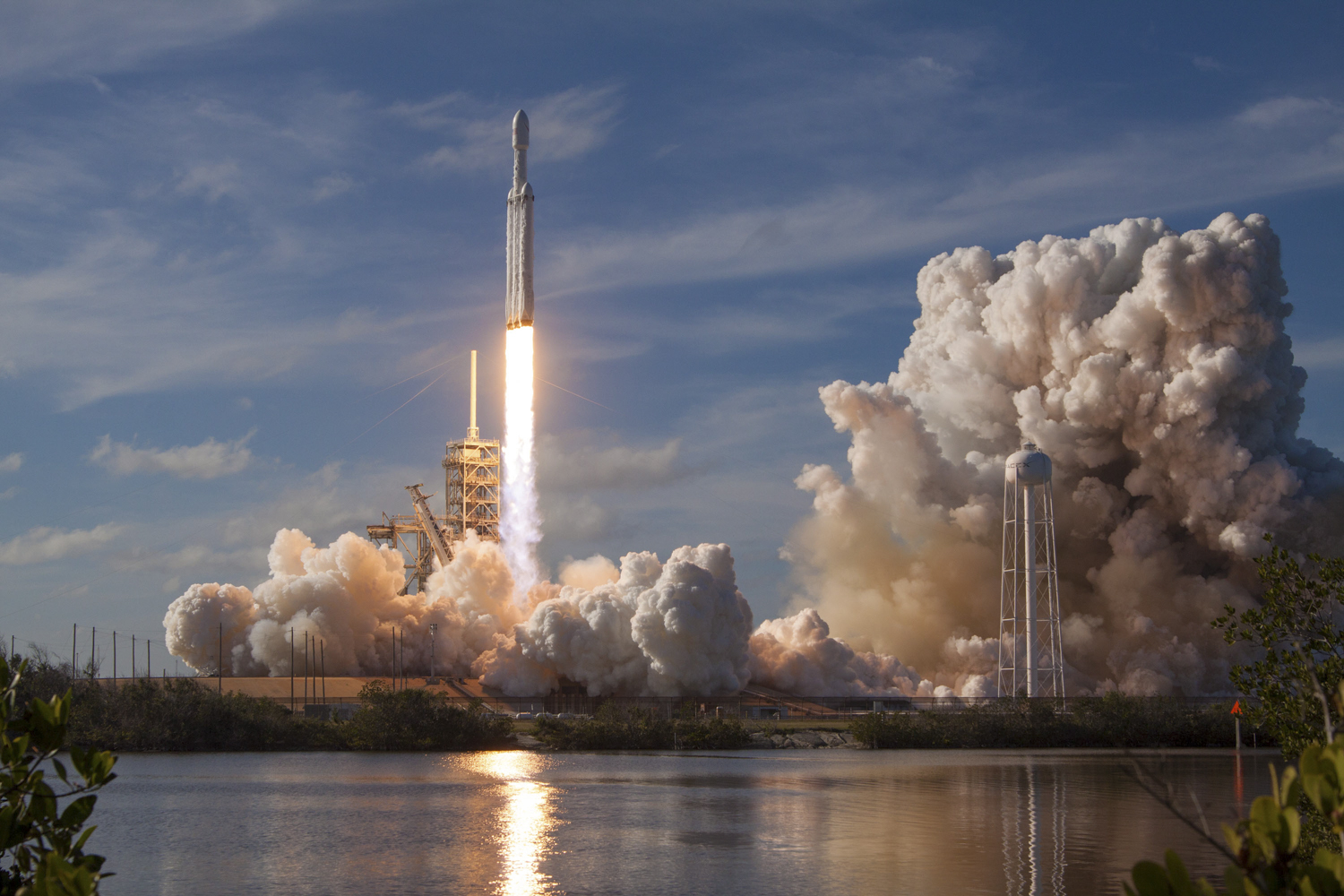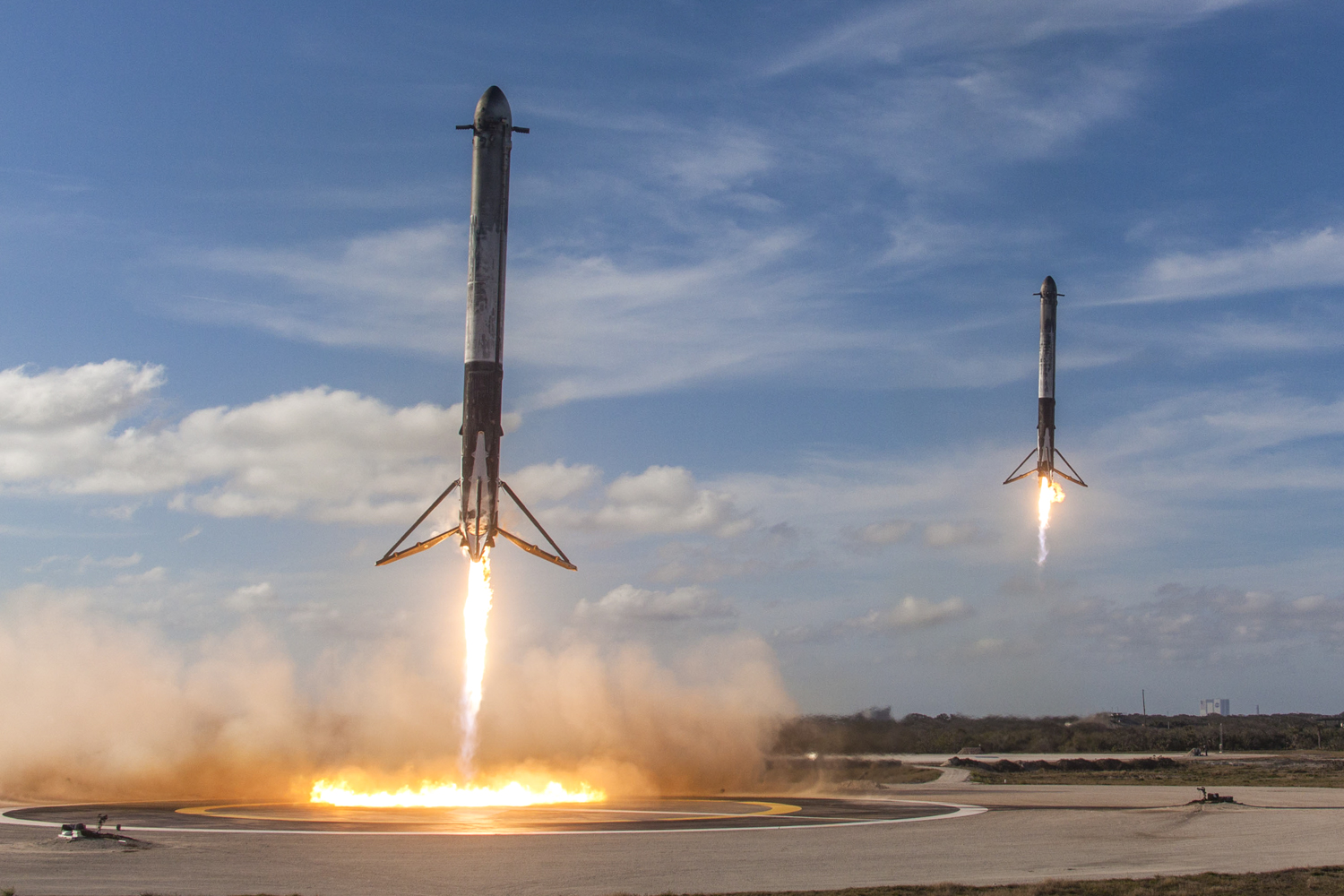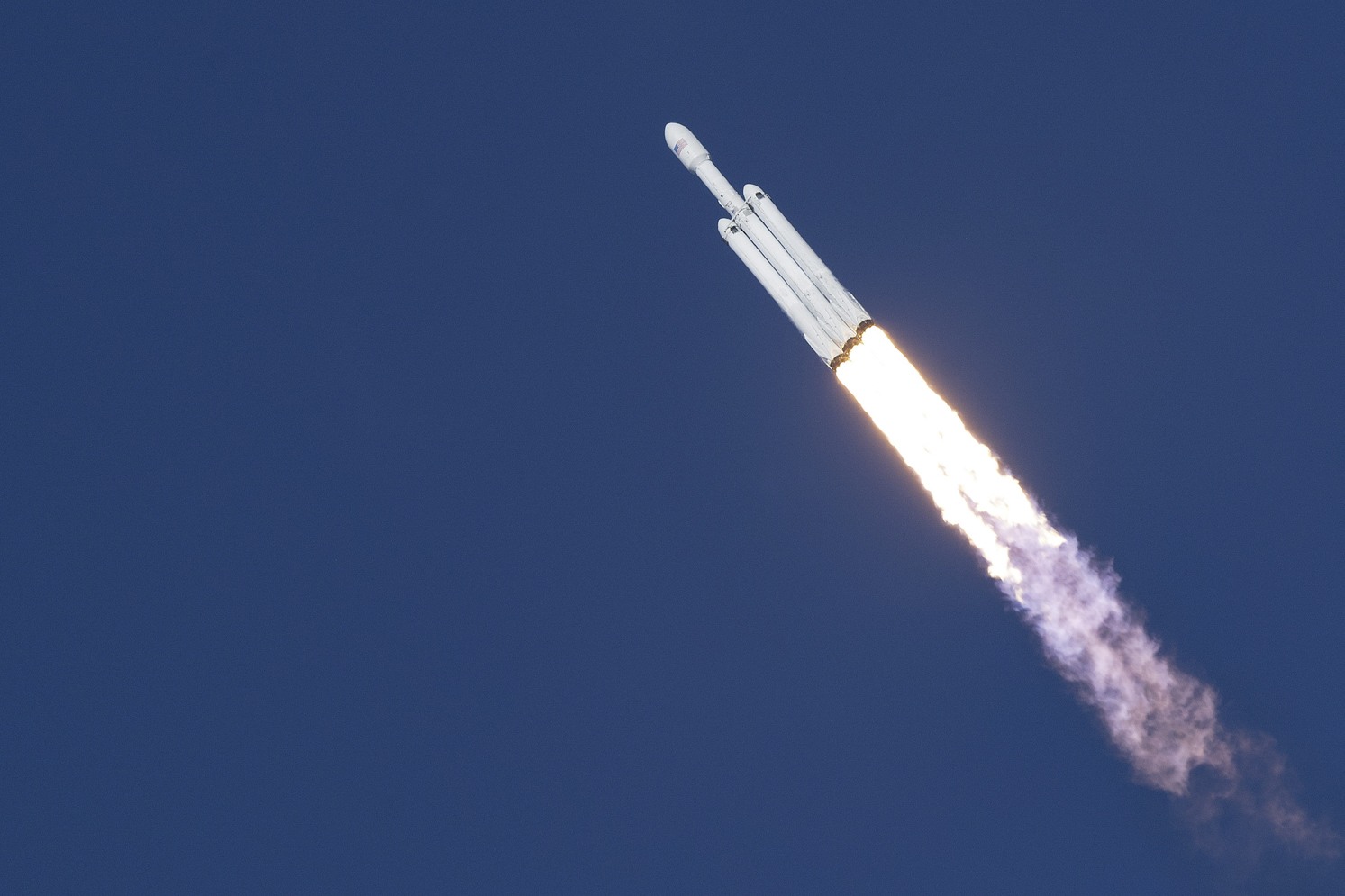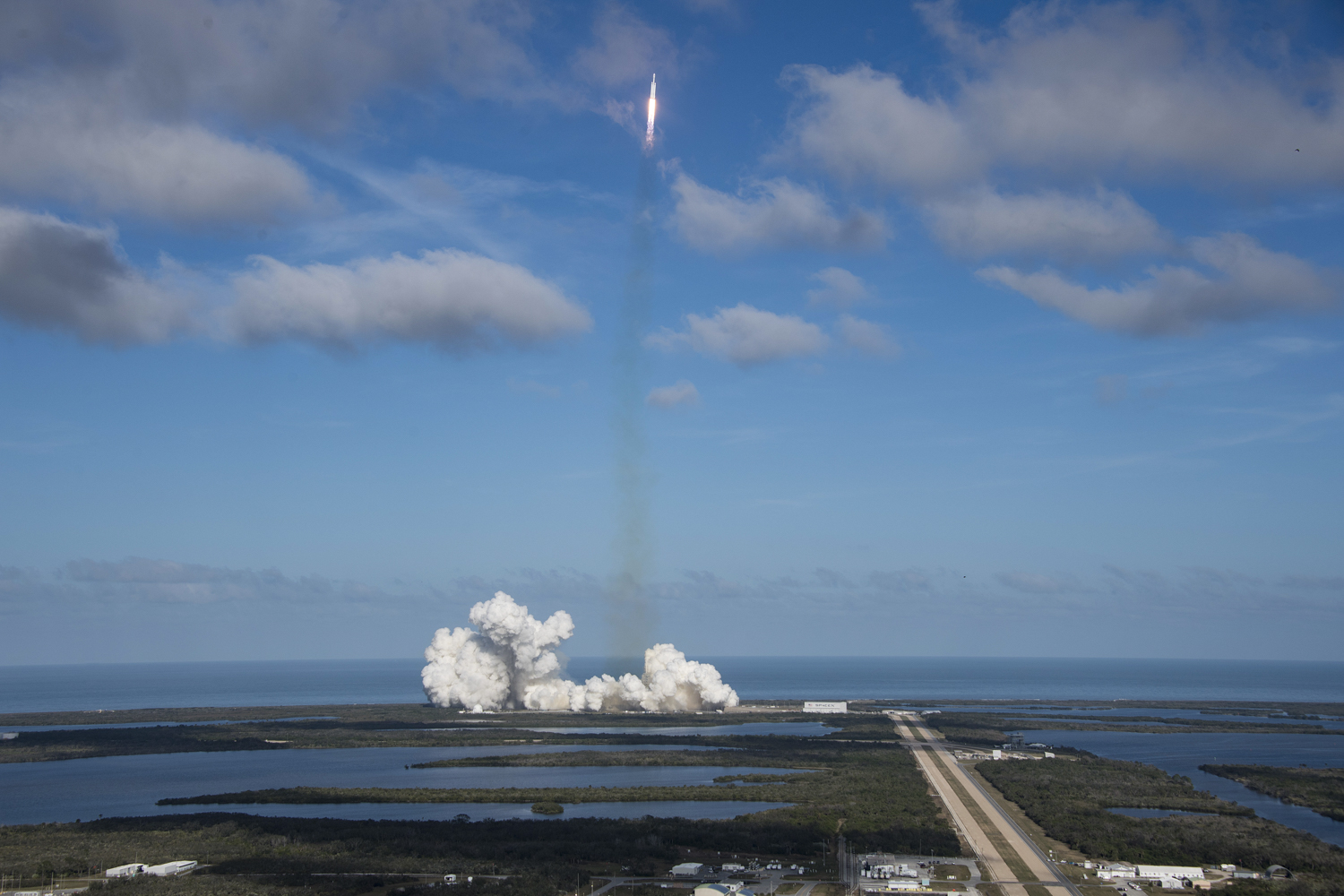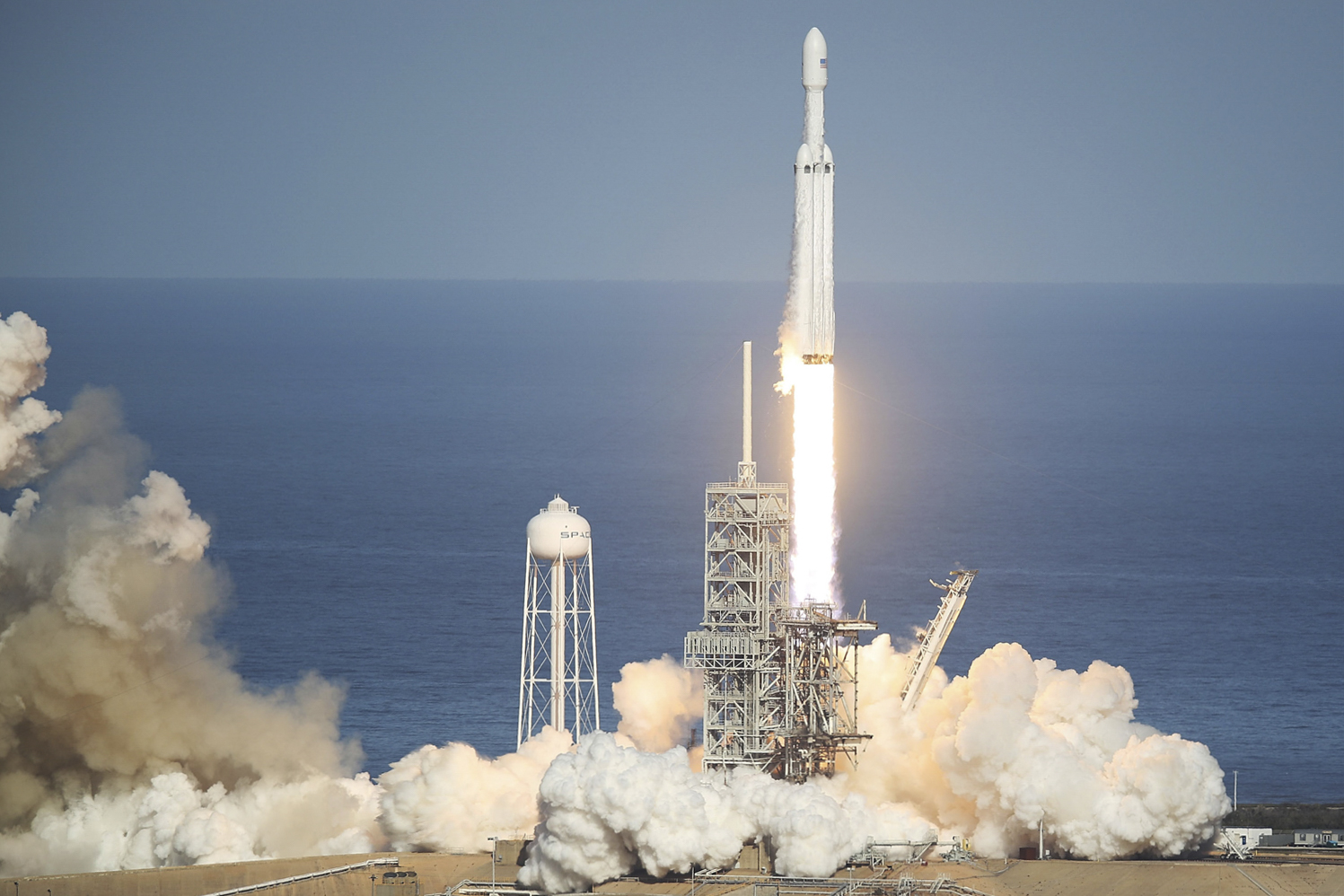What happened to the center core?
At the post-launch press conference, Elon Musk explained that during its final landing burn, the center core didn’t have enough propellant to re-ignite all nine of its engines. It crash landed and was destroyed.
Today, at approximately 3:45 PM EST, SpaceX’s Falcon Heavy rocket — the largest operational rocket in the world — lifted off from NASA’s Kennedy Space Center in Florida.
Despite suffering a few minor delays caused by weather, the launch went almost perfectly. After safely delivering its flashy payload (Elon Musk’s cherry-red Tesla roadster), the rocket’s first two stages fell back to Earth and landed themselves in spectacular fashion — touching down at Cape Canaveral almost simultaneously.
Shortly after, the third booster fell back and attempted to land itself on SpaceX’s autonomous droneship, Of Course I Still Love You, in the Atlantic ocean — but unfortunately, something went wrong. According to statements made by Elon Musk during a press conference held after the launch, the center core didn’t have enough propellant to re-ignite all nine of its Merlin engines during the final landing burn. As such, it crash landed and was destroyed.
Not one to shy away from failure, Musk remarked on the crash with some dry humor, telling reporters, “if the cameras didn’t get blown up as well, we’ll put that up in a blooper reel or something.”
Regardless of the fate of the Falcon Heavy’s center core, this historic achievement bodes well for the future of SpaceX. Unlike the company’s smaller Falcon 9 rockets, the Falcon Heavy is designed to carry heavier payloads. According to SpaceX, the rocket has the “ability to lift into orbit nearly 64 metric tons (141,000 lb) — a mass greater than a 737 jetliner loaded with passengers, crew, luggage and fuel.”
Crucially, the Falcon Heavy can send these payloads into orbit not only around Earth, but also to the Moon and Mars. SpaceX definitely isn’t the only launch provider in the world that’s capable of sending payloads to Mars and the Moon — but because the Falcon Heavy’s first stage boosters are capable of being landed, recovered, and reused; SpaceX should be able to conduct these large rocket launches at a substantially lower cost than its competitors.
Decreasing the cost of rocket launches is critical if we ever hope to explore the Moon and colonize Mars — something that SpaceX CEO Elon Musk thinks will be possible in the next few years.
Editors' Recommendations
- SpaceX’s Falcon 9 rocket just completed a milestone mission
- SpaceX all set for a record-breaking rocket launch on Friday
- SpaceX shares stunning night shot of its Super Heavy booster
- SpaceX already has a date in mind for next Starship launch
- Take a high-speed ride on SpaceX’s emergency escape chute

